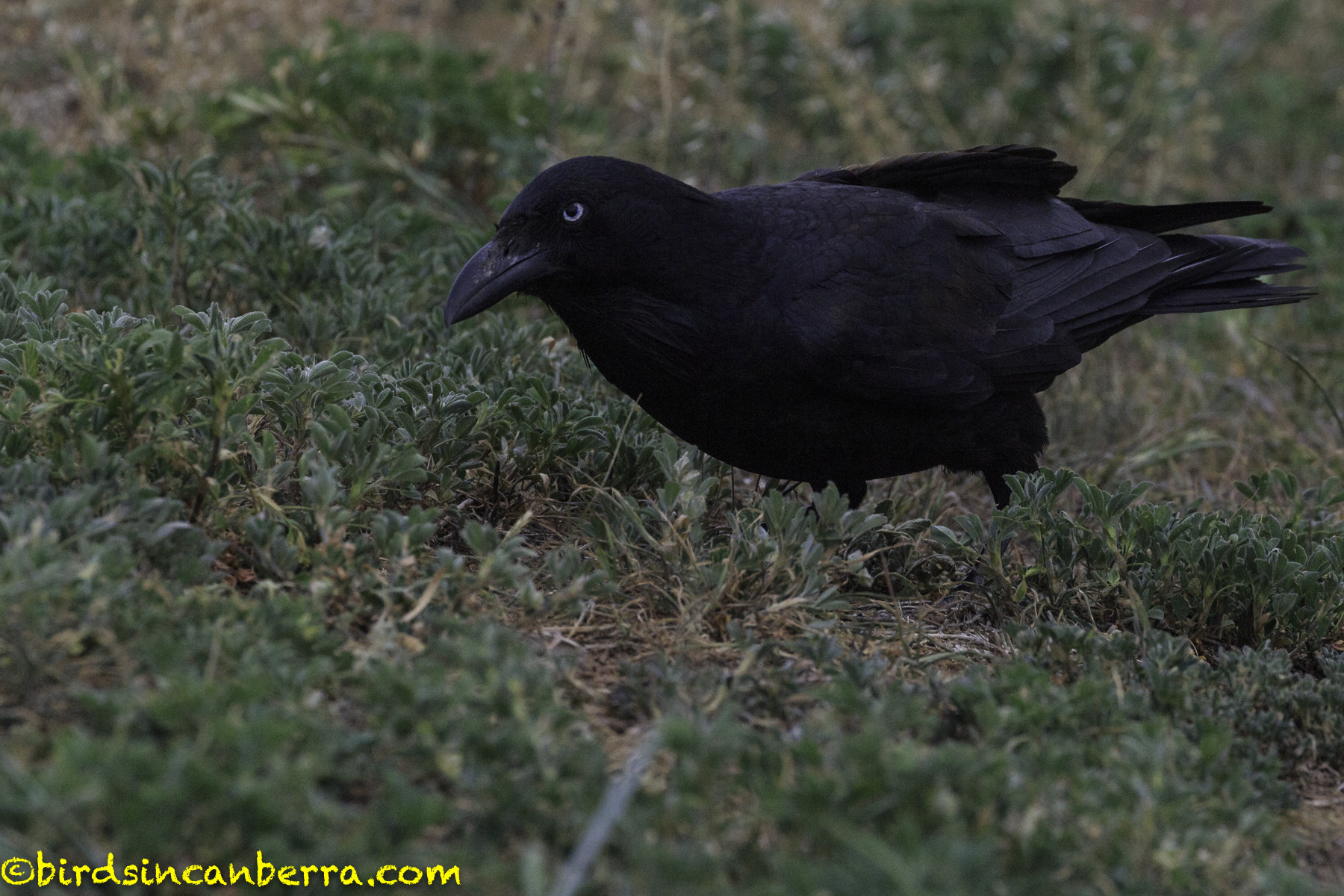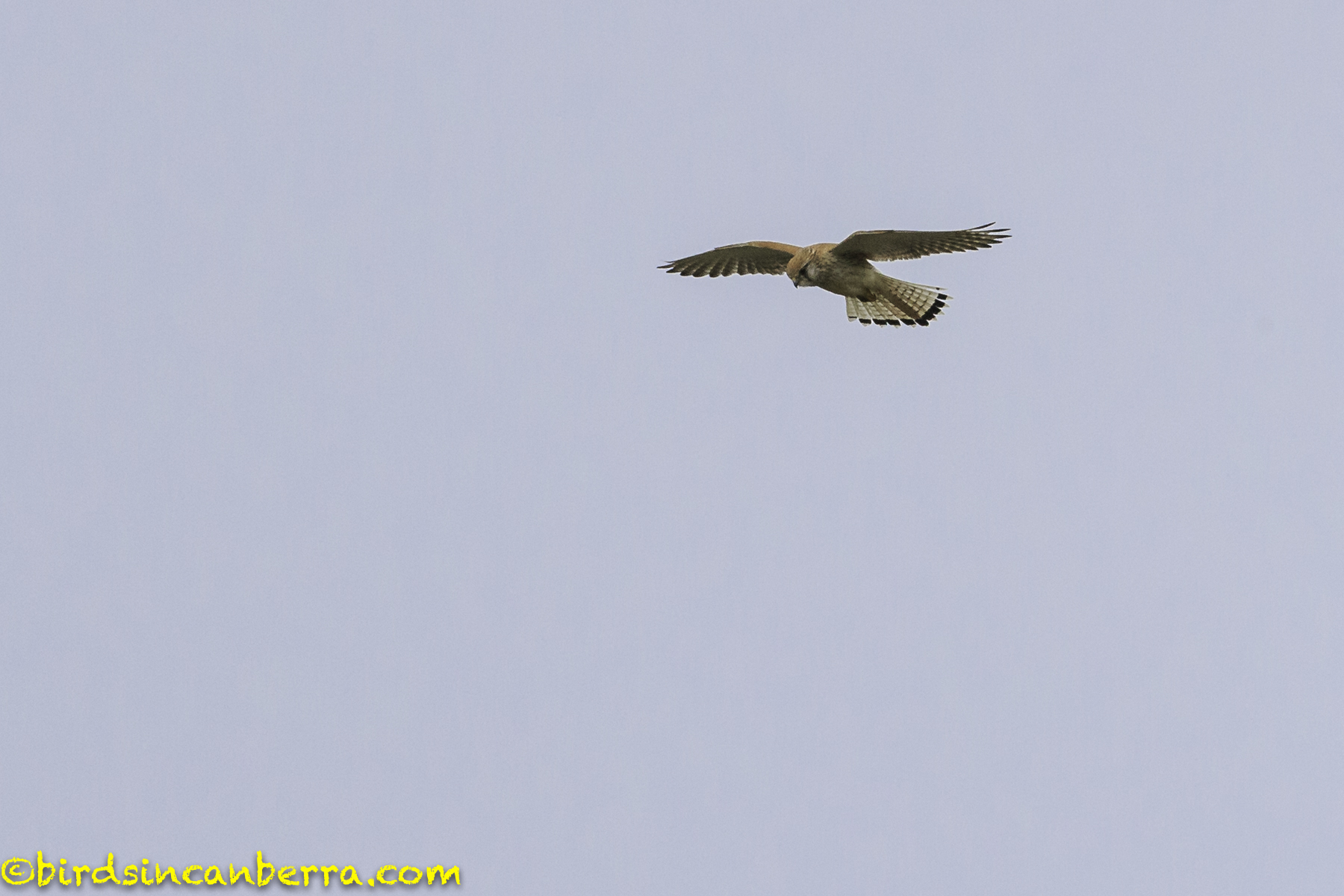After visiting the Australian National Botanic Gardens the previous day we had continued our floral tour by having lunch at the National Arboretum. Driving around the loop on the way out after our delicious lunch I was sure I had seen a raptor hovering on an air current over the southeastern slope of Dairy Farmers Hill. Since I had not photographed at the arboretum for a while I figured it was time to return to see what birdlife was there. I am glad I did as it was a wonderful morning. I saw the Nankeen Kestrel; despite the wind she was well accomplished at hanging in the air waiting to strike. There was so much other birdlife as well, I was especially pleased to see the two species of cormorants on the small dam at the base of the hill near the entrance. I hope you enjoy these photographs.
Although I ended the morning at the arboretum I started the day at Lake Burley Griffin looking for cormorants and darters; on both counts I failed. I did see three Black-faced Cuckoo-shrikes in a willow tree. Unsure if I disturbed them but they soon flew off in the direction of Black Mountain.
I drove to the arboretum heading up to the Himalayan Pines first. When I returned to my car there was this female Magpie-lark on the top. The first photo shows her looking like she is gazing at her reflection in the roof. I am not sure what she was doing as she spent a lot of time sliding at the edges of the roof. She found the front especially difficult, often having to fly as she started slipping down the windscreen. I delayed approaching my car as I was so intrigued by her antics. Eventually she must have thought the car was winning as she flew off the south facing side of the car.
Next I went to Dairy Farmers Hill, as this was where I had seen the raptor the day before. There were so many magpie groups visible across the hill, although none of them seemed to be fighting territorial wars, it was like the hill was neutral territory. I saw a group of Australian Ravens close enough to photograph on yet another overcast day. They would graze in one area, then fly to a different location.
Walking back to my car I was resigned to not seeing the bird I caught a glimpse off the previous day. I then noticed what appeared to be a flat, brown rectangle in the air above the southern facing slope of Dairy Farmers Hill. My eyesight is not the best, so I guessed it was a device attached to a power line to make it visible to low flying aircraft. I thought I would use the telephoto lens to check it out just to make sure. I was thrilled when I saw the object was actually a Nankeen Kestrel. It was so flat, hovering above the ground on what was a really windy day. I was impressed that despite the winds it was able to stay stationary. It would occasionally flap its wings but generally it would glide by apparently changing its wing and tail dynamics. It landed a few times but I could not see if it pounced on any food. I was able to take some closer shots when it landed on a convenient plant stake on the slope. I was happy watching it but then it landed in a fold in the hill but I could not see it, even though I moved to a spot where I thought I could see all parts of the slope. According to this go to reference book on Australian bird names the term Nankeen refers to Nankin or Nanking in China as in the 1800s the area was famous for producing a cheap, yellowish cloth. The material became so widespread the colour took on the name of the producing area, hence Nankeen to describe the colour of this bird, as well as the Nankeen Night Heron.
Returning from following the kestrel over the slopes of Dairy Farmers Hill I saw four Australian Pipits in the area with the large rocks. Two of them were doing well in keeping the caterpillar population in check. The first one was on a garden stake, photo one. I was fortunate in getting some shots of it in flight because the sun came out at just the right time, photos two and three. The next one was on top of one of the large rocks, photo four and five. As I worked my way around to get the sun at my back it ran to the back of the rock. However, it must have realised that I was still out the front as the next thing I saw was its head appear in a the v-shaped crook of the rock looking at me, while it still had a caterpillar in its mouth. I tried hard not to laugh when only its head poked up meerkat-like to see what I was doing. There was then another one on another rock and a fourth on some open grass.
Driving down the Dairy Farmers Hill towards the entrance I had a good view of the small dam where I saw a number of Little Black Cormorants. They were doing sweeps across the dam. They travelled in a straight line across the dam’s surface, initially to the north. until they arrived at the shore of the dam. The group then changed direction in an anti-clockwise pattern to roughly an eastern heading and did the same thing. This time heading southwest to describe a rough triangle across the surface of the dam. Some of the birds were lucky to get good sized fish, then they would almost be mobbed by other birds. I think these were all adult birds. I took some photos from my car but I realised I needed to get out to obtain better shots. Unsure if they were disturbed by my presence but when they headed on the northward leg again, this time they all took off in that direction heading towards Lake Burley Griffin.
While I was watching the Little Black Cormorants above I realised there was a Great Cormorant perched on a rock overlooking the dam. It was not disturbed by the other cormorants. It initially did not seem to pay any attention to me. I sat down where I was since I did not want to disturb it. That was when the other cormorants flew off. After a while the Great Cormorant also decided to leave. It took off from the rock, initially heading low over the water but rather than flying towards Lake Burley Griffin it banked to the east, circling the dam twice before it finally headed in the direction of the lake. I am not sure why it flew around the dam; whether it was banking to gain attitude, as it certainly did that, or may be its feathers were not fully dry. Whatever the reason I had the chance to photograph it in flight.

































